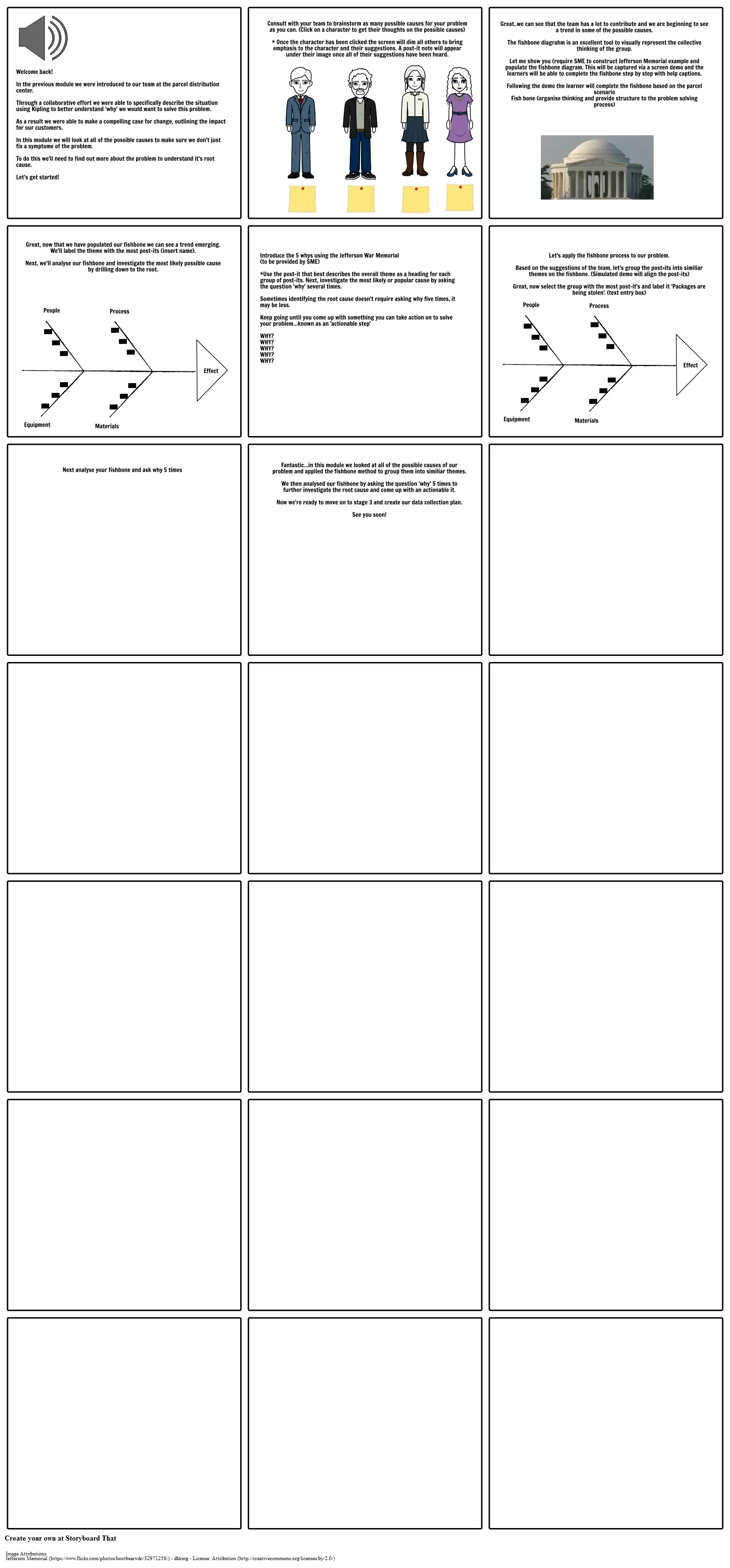Module 3: Stage 2 - Identify possible causes

Storyboard Text
- Welcome back! In the previous module we were introduced to our team at the parcel distribution center. Through a collaborative effort we were able to specifically describe the situation using Kipling to better understand 'why' we would want to solve this problem. As a result we were able to make a compelling case for change, outlining the impact for our customers. In this module we will look at all of the possible causes to make sure we don't just fix a symptome of the problem. To do this we'll need to find out more about the problem to understand it's root cause. Let's get started!
- Consult with your team to brainstorm as many possible causes for your problem as you can. (Click on a character to get their thoughts on the possible causes) * Once the character has been clicked the screen will dim all others to bring emphasis to the character and their suggestions. A post-it note will appear under their image once all of their suggestions have been heard.
- Great..we can see that the team has a lot to contribute and we are beginning to see a trend in some of the possible causes. The fishbone diagrahm is an excellent tool to visually represent the collective thinking of the group. Let me show you (require SME to construct Jefferson Memorial example and populate the fishbone diagram. This will be captured via a screen demo and the learners will be able to complete the fishbone step by step with help captions. Following the demo the learner will complete the fishbone based on the parcel scenario Fish bone (organise thinking and provide structure to the problem solving process)
- Equipment
- Great, now that we have populated our fishbone we can see a trend emerging. We'll label the theme with the most post-its (insert name). Next, we'll analyse our fishbone and investigate the most likely possible cause by drilling down to the root.
- People
- Materials
- Process
- Effect
- Introduce the 5 whys using the Jefferson War Memorial (to be provided by SME) *Use the post-it that best describes the overall theme as a heading for each group of post-its. Next, investigate the most likely or popular cause by asking the question 'why' several times. Sometimes identifying the root cause doesn't require asking why five times, it may be less. Keep going until you come up with something you can take action on to solve your problem...known as an 'actionable step' WHY? WHY? WHY? WHY? WHY?
- Equipment
- Let's apply the fishbone process to our problem. Based on the suggestions of the team, let's group the post=its into similiar themes on the fishbone. (Simulated demo will align the post-its) Great, now select the group with the most post-it's and label it 'Packages are being stolen'. (text entry box)
- People
- Materials
- Process
- Effect
- Next analyse your fishbone and ask why 5 times
- Fantastic...in this module we looked at all of the possible causes of our problem and applied the fishbone method to group them into similiar themes. We then analysed our fishbone by asking the question 'why' 5 times to further investigate the root cause and come up with an actionable it. Now we're ready to move on to stage 3 and create our data collection plan. See you soon!
Image Attributions
- Jefferson Memorial - dbking - (License Attribution )
Over 30 Million Storyboards Created

